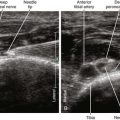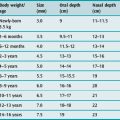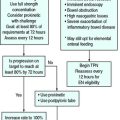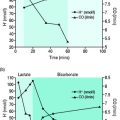
If you’ve found yourself wondering what shapes a typical speech language pathologist salary, you’re far from alone. It’s a profession in motion—shaped by steadily growing demand, a changing healthcare landscape, and the distinct contributions SLPs make every day. Many of us know there’s opportunity in the field, but the details often carry more nuance than expected.
Let’s take a close look at those factors that do the real work behind the pay packet: experience, location, and specialisation. As we move through each, you’ll see how these elements interact to affect not only earning power, but the day-to-day shape of an SLP’s working life.
Years That Count
Experience isn’t just a number on your CV. In speech and language therapy, every year translates to a broader set of skills, greater confidence, and—yes—a clear increase in salary.
Fresh out of training in the US, speech language pathologists typically start on an annual salary between $66,000 and $84,000. It’s a solid beginning, certainly, though by the 7-to-10 year mark, it’s entirely possible to see that climb to $90,000 or $95,000. Push past 15 years—especially if you move into supervisory, clinical lead, or management roles—and you’ll often tip into six figures.
In the UK public sector, pay follows a structured yet flexible NHS banding system. New SLPs enter around £28,400–£34,600, but progression is built in. Senior clinicians, especially in places like London, can reach well above £55,000, sometimes even £61,000 for top specialist posts. Each step forward brings fresh challenges, additional mentoring responsibilities, or a chance to focus on complex cases.
So, yes: time served matters, but so does the way you apply yourself in those years. For many, each promotion up the clinical ladder shapes a more individual career—one where expertise feels properly recognised, both in job scope and monthly pay.
Location, Location, Pay Rise
Where you choose to practise as an SLP isn’t a casual decision. Geography pulls salary in more directions than you might expect, and location-based pay has become a central talking point within the profession.
Some of this is about cost of living. Areas like New York City, Los Angeles, or San Diego routinely post significantly higher pay—$130,000 to $168,000, based on current market data. It’s a noticeable leap from Houston’s $115,000 or the $121,000 you might earn in Orlando. Still, these numbers must be weighed against commuting hours, rent, and the broader lifestyle you want.
The picture looks similar in the UK. London-based SLPs consistently earn up to 27% more than the country’s national average, a premium of around £13,000. The NHS “high cost area” supplements help bridge the gap between city and regional wages, but disparities remain. Rural areas sometimes offer “hard to fill” bonuses if the recruitment pool is small, yet these aren’t always predictable.
Then there’s your actual workplace environment to consider. US-based SLPs in skilled nursing facilities or hospitals average $105,000—quite a bit more than the $79,000–$83,000 range found in school settings or early years clinics. In practice, this means your salary isn’t dictated solely by your postcode. The nature of your daily caseload—acute, community, or paediatric—can be just as important.
It’s worth sitting with this thought: the right environment, in the right region, can nudge an SLP’s salary further than years of service alone.
The Value of Specialisation
Specialisation shifts the entire landscape again. With certain competencies—swallowing and dysphagia, complex neurological conditions, or advanced paediatric experience—demand begins to outpace supply.
The numbers are telling. In the US, SLPs taking up clinical leadership, research, or highly specialised roles frequently report salaries north of $112,000. There’s genuine variation, too: SLPs who pivot to contract, “locum,” or temporary roles in under-resourced specialties can secure higher hourly rates, driven by immediate clinical needs.
In the UK, supplementary qualifications such as post-graduate certification in dysphagia, advanced autism, or neurological rehabilitation fast-track many SLPs into higher pay bands. Employers—especially specialist units or independent clinics—are often quick to reward this additional expertise.
If you’re looking to advance, it’s worth seeing your next clinical interest not just in terms of clinical satisfaction, but as a solid investment in your earning future.
Total Rewards That Matter
Salary is only part of the equation. The real value of any SLP role should consider the “total reward”—everything from paid leave and pension contributions to training funded by your employer.
If you work in the NHS, pension participation rates remain high, and annual leave rises to over 33 days for long-standing employees. Continual professional development is standard, with protected funding and study leave built into most clinical contracts.
Across the US, SLPs regularly point to healthcare benefits, retirement contributions, and education stipends as essential elements. In fact, many contract or travel SLP jobs offer add-ons like relocation bonuses or per-diem allowances, helping bridge the gap between base pay and broader financial stability.
The key point:
- Salary, pension, annual leave, ongoing training, healthcare cover, and flexible working arrangements all combine to shape the real value of the job.
Total reward is less visible than a top-line salary, but just as critical to long-term satisfaction.
Chasing Opportunities: A Widening Global Landscape
All this sits against a background of strong and sustained demand for speech language pathologists. In the US, the Bureau of Labor Statistics projects a 19% job growth rate for SLPs between 2022 and 2032—outpacing most allied health roles.
The reasons are straightforward. You’ve got an ageing population, increasing post-stroke and post-COVID rehabilitation needs, and a rising awareness of speech and language conditions among children and adults alike. The NHS and leading Canadian and Australian providers all report parallel trends; recruitment drives keep ramping up, especially in specialist and community positions.
Put simply, this sustained demand continues to nudge salaries and opportunities up, whether you’re practising in central London, Melbourne, or New York.
Salary Isn’t the Whole Story
As you navigate your career, it’s useful to see every salary statistic as more than just a headline. Yes, experience counts. Location offers genuine leverage. Specialisation rewards commitment and skill. Yet the most powerful route to career satisfaction often blends the three, while never losing sight of the benefits that make life outside the clinic richer too.
It’s not only about earning more, but about progression that feels genuinely your own. In the field of speech language pathology, evidence tells us this isn’t just possible—it’s already happening, for thousands of SLPs building unique, satisfying careers every year.







